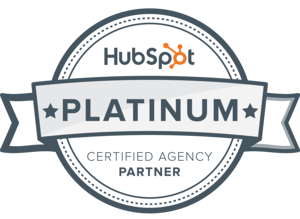The recent explosion of artificial intelligence (AI) has changed how people search and consume content. Programs like generative AI assistants and voice search have elevated results driven by intent over keyword stuffing and traditional ranking tricks. This upheaval has led many marketers to scramble to adapt their strategies to keep up. How do you create AI-friendly content, then? What makes your copy appealing to both algorithms and human readers? At its core, AI-friendly content must deliver clarity, context, and value to human readers. In this blog post, we’re sharing what you need to know about how AI interprets your content and the strategies you can leverage to begin AI content optimization.
 Characteristics of AI-Friendly Content
Characteristics of AI-Friendly Content
In traditional search engine optimization (SEO), the primary method of improving search rankings is keyword targeting. However, AI wants to provide not just content with keywords but also relevant, quality, and trustworthy information. This means AI-friendly content creation requires three characteristics: clarity, relevance, and alignment with user intent.
Clarity
Both readers and AI models want structured and easy-to-digest information to process more effectively. As such, AI-friendly content must use concise language, maintain a logical flow, and include descriptive headings. These features help algorithms understand the content’s purpose and meaning.
Relevance
AI programs want to provide relevant information to address the reader’s query. As such, these programs prefer content that covers a topic comprehensively and uses credible resources. Expertise matters because of this requirement. You must be able to demonstrate that your insights are accurate and informed.
User Intent Alignment
For a good while now, numerous users have reported that Google Search engine results do not meet their search intent. Too many pages are too SEO optimized, so they appear on the top results even though they’re not what the user is looking for. Since generative AI typically uses conversational models, the programs prioritize content that provides direct, synthesized answers that address the user’s intent immediately.
SEO Best Practices for AI-Driven Search Engines
 What are the specific steps you can take to ensure that your content appears in AI results? Here are a few best practices in large language model (LLM) SEO.
What are the specific steps you can take to ensure that your content appears in AI results? Here are a few best practices in large language model (LLM) SEO.
- Write With Intent. Don’t Rely on Keywords!
Traditional SEO emphasizes keyword use heavily. However, reliance on this strategy may make your content ineffective for data scraping or crawling. Optimized content must help the AI model answer the “why” behind the user’s search. Answering questions directly, explaining topics clearly, and providing the information your audience needs is how you optimize your content.
- Content Must Be Structured for Easy Scanning
It isn’t just readers who want scannable copy. AI models also prioritize well-organized content, as it helps them extract key information more efficiently. Here are some specific steps you can take.
- Having clear headings
- Using short paragraphs revolving around one central idea
- Organizing sections depending on the suptopic
- Clear flow of ideas
- Emphasize EEAT Principles
Experience, expertise, authoritativeness, and trustworthiness (EEAT) is a framework that programs like Google use to assess content. Your posts or articles must share real-world experiences, including case studies, client testimonials, or insights from qualified experts, to be valued as high-quality content. You must also build trust by using transparent sources and keeping content up to date. Following the EEAT principles helps AI understand that your content and brand deserve visibility.
- Keep Your Content Fresh
One more strategy for AI-friendly content creation is ensuring regular updates. When the facts and information in your content are fresh, AI sees it as more relevant and reliable.
Writing for Humans and AI Simultaneously
Even with traditional SEO, you likely aim to write content that is relevant in search engines while also resonating with real humans. The same goal applies to LLM SEO. While generative AI can deliver tailored answers, users will still visit your website to verify AI-generated information, seek deeper insights into the topic, and find products or services that address their needs. Fortunately, there’s a lot of overlap between writing for AI optimization and human consumption.
Human-focused Content
For most people, content that tells a story and adds value is the priority. Conversational language is often the ideal tone, but it can vary across industries and target audiences. As much as possible, the content should be relatable. Structure-wise, the text must smoothly flow from one idea to another. These features help readers feel understood, increasing engagement.
AI-optimized Content
As we outlined above, AI-friendly content must be explicit, relevant, and context-rich. The formatting suggestions are a huge plus. But more importantly, content must cover topics thoroughly rather than offer surface-level details. The in-depth information helps AI models recognize that your content aligns with a searcher’s intent.
Bring these two elements together, and you can create content that readers care about while also being AI optimized. Natural writing, storytelling, and avoiding jargon that makes topics too technical help you publish content that appeals to both humans and machines.
Using AI Tools to Generate and Optimize Content
 Brands and marketing teams have been adopting AI tools to create AI-optimized content since these programs became mainstream. These innovations are now part of marketing workflows, helping optimize campaigns and automate tasks. However, many experts agree that AI is still underutilized. How, then, can you use AI for AI-friendly content? Here are some tips to follow.
Brands and marketing teams have been adopting AI tools to create AI-optimized content since these programs became mainstream. These innovations are now part of marketing workflows, helping optimize campaigns and automate tasks. However, many experts agree that AI is still underutilized. How, then, can you use AI for AI-friendly content? Here are some tips to follow.
- Brainstorm Ideas: Creating context-rich content requires coherent topics and subtopics. AI can help you generate fresh ideas and angles based on trending topics or keywords, reducing the need for extensive research.
- Smarter Content Drafting Process: AI can generate drafts for your content, headlines, or product descriptions. While the content cannot replicate your brand voice or messaging exactly, AI can help provide a strong starting point. This advantage enables you to overcome a creative block and start creating high-quality content much faster.
- Optimizing for LLM SEO: In addition to generating content, many LLMs can analyze the quality of the copy they produce. You can use the software to evaluate readability, suggest stronger keywords, or flag inaccuracies or knowledge gaps in your content. With this added precision, your content can better meet EEAT principles and become more AI-optimized.
Avoiding Common Pitfalls in AI Content Creation
As you pivot to content SEO for AI, it’s essential to be aware of potential pitfalls that could lead to content for the algorithm rather than for real people. Here are some traps you want to avoid.
Shallow, Surface-level Content
LLM programs prefer content that is deep and authoritative. Surface-level content is the opposite of this goal. This issue can manifest as text that merely describes ideas instead of offering insight or real-world examples. Make sure that your content has tangible value by including concrete data, unique perspectives, or actionable advice.
Neglecting EEAT
If your content doesn’t show real experience, expertise, or trustworthiness, AI models may deprioritize it in favor of more credible sources.
Over-optimizing for AI
If you prioritize AI optimization over the reader experience, then your content may become unreadable and unrelatable to humans. AI favors content that people will want to engage with.
Wrapping Up: AI-friendly Content for Modern Brands
AI is here to stay, and savvy brands and marketing teams must evolve their content to make it AI-friendly. This practice determines how you appear in AI search results and how you maintain relevance. By following the tips above, adhering to EEAT principles, and leveraging AI tools to help create AI-optimized content, you can better plan for the evolution of AI search and remain visible to your target audience.
Need help creating AI-friendly content that ranks and resonates? Reach out to Connection Model to craft cutting-edge content strategies.
Written By: David Carpenter


